This is the queen of pound cakes, especially when baked in a bundt pan. It's soft but dense, the crumb is perfectly tight but moist, and it is wonderful eaten plain, glazed or served with fresh fruit or a topping. The cake keeps well for several days and has a wonderful melt-in-your-mouth crumb.
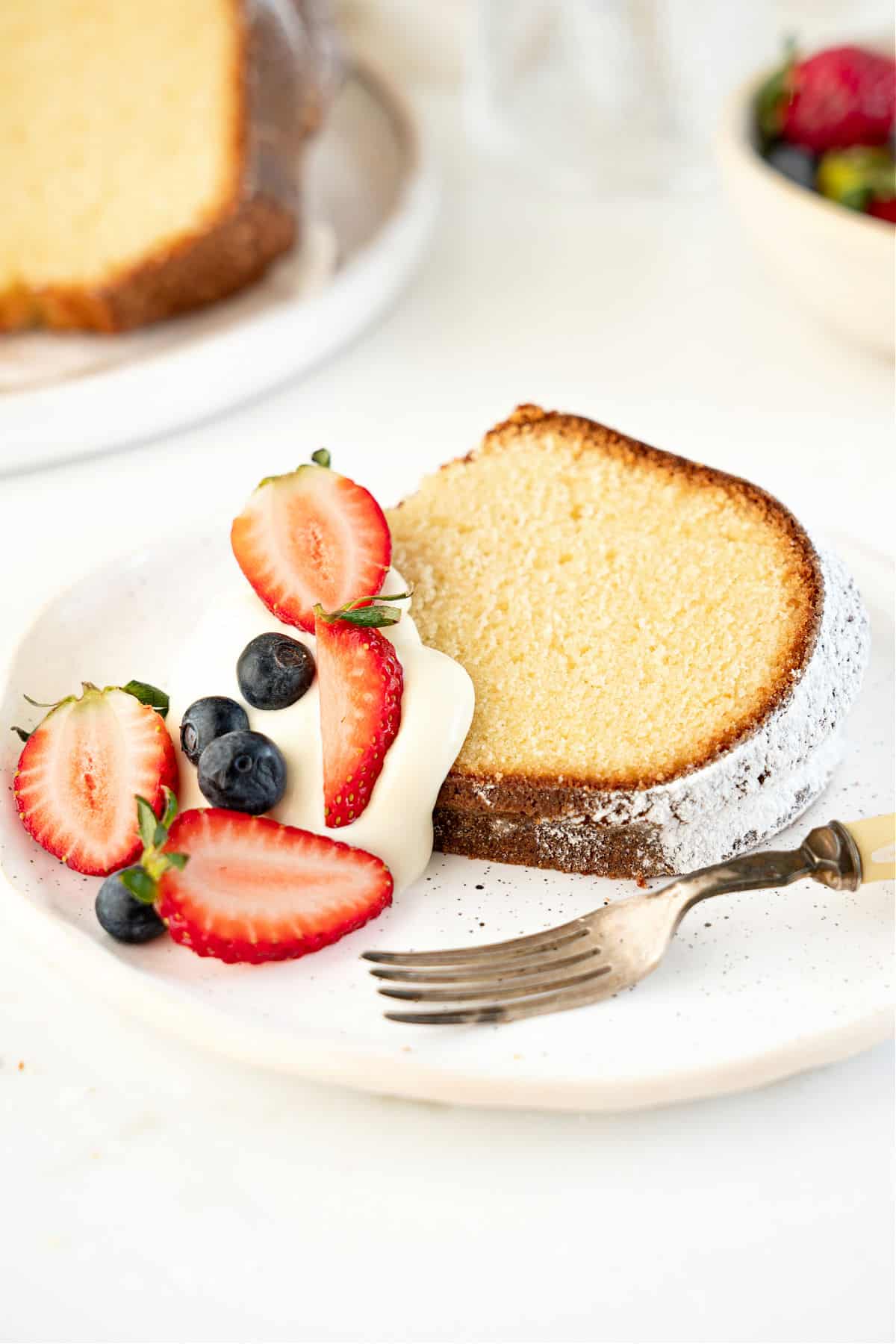
The best pound cake
That's my personal opinion, of course, but most people would agree. It's the quintessential soft and moist bundt cake, with a fantastic crumb and perfect 'plain' flavor.
In this little blog, we love bundt and pound cakes, so adding this old-fashioned favorite was a no-brainer. And a much-needed one, as everyone should have a classic pound cake in their files.
- Plain vanilla flavor: it has extract but it's also plain, different from this vanilla pound cake that explicitly enhances it.
- It has a great crumb with a melt-in-your-mouth quality that's all you want in a pound cake.
- You can make it ahead. It stays at room temperature for a few days and freezes wonderfully for a month.
FAQ
Yes and no. A bundt cake has its name due to the patterned round pan with a center tube it's baked in (like this coconut cake), not the type of batter. A pound cake is a dense, old-fashioned type of cake that can be made in a bundt pan but also as a loaf, like the lemon pound cake.
Cracking on top is normal! And in my opinion, it's a good sign. Pound cakes have a thick batter and a long bake time. The outer edges set first while the center continues to rise, creating a natural split. You can minimize cracks by baking at a slightly lower temperature (325°F or 165°C).
I don't recommend it as it will not provide the richness and texture that regular, full-fat cream cheese does. That said, you can try it and find that you like it just fine. I would make half the recipe in case it doesn't work, so you don't waste so many ingredients. Dairy products vary depending on the brand and country.
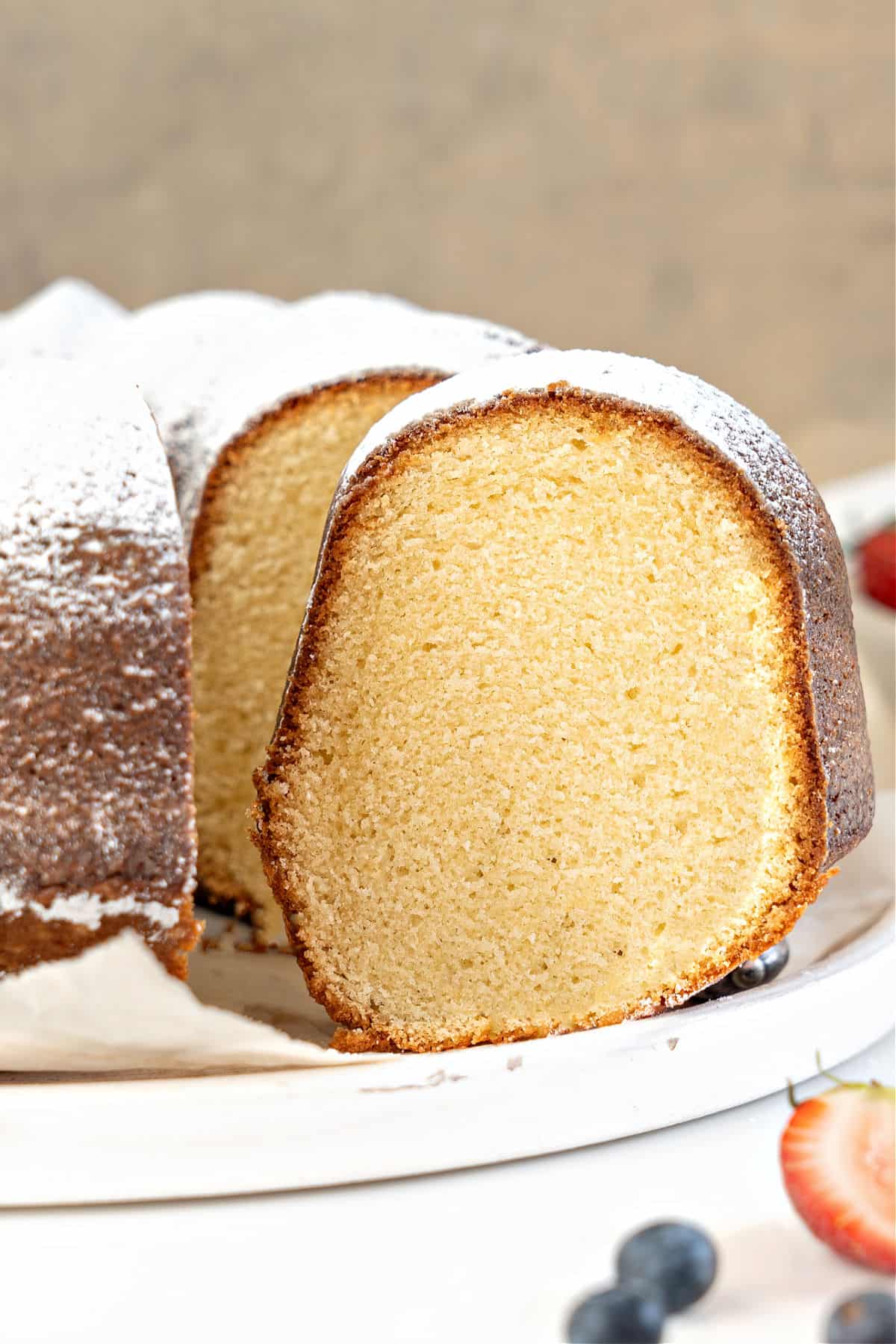
Ingredient Notes
Quantities are listed on the recipe card towards the end of this post. The Ingredients page has more details and lists the brands we use.
- Cream cheese: use the regular, full-fat type. It adds richness and moisture.
- Flour: all-purpose or cake flour, both work.
- Baking powder: make sure it hasn't expired.
- Eggs: fresh, large.
- Milk: whole milk makes for a richer cake, but you can use 2%.
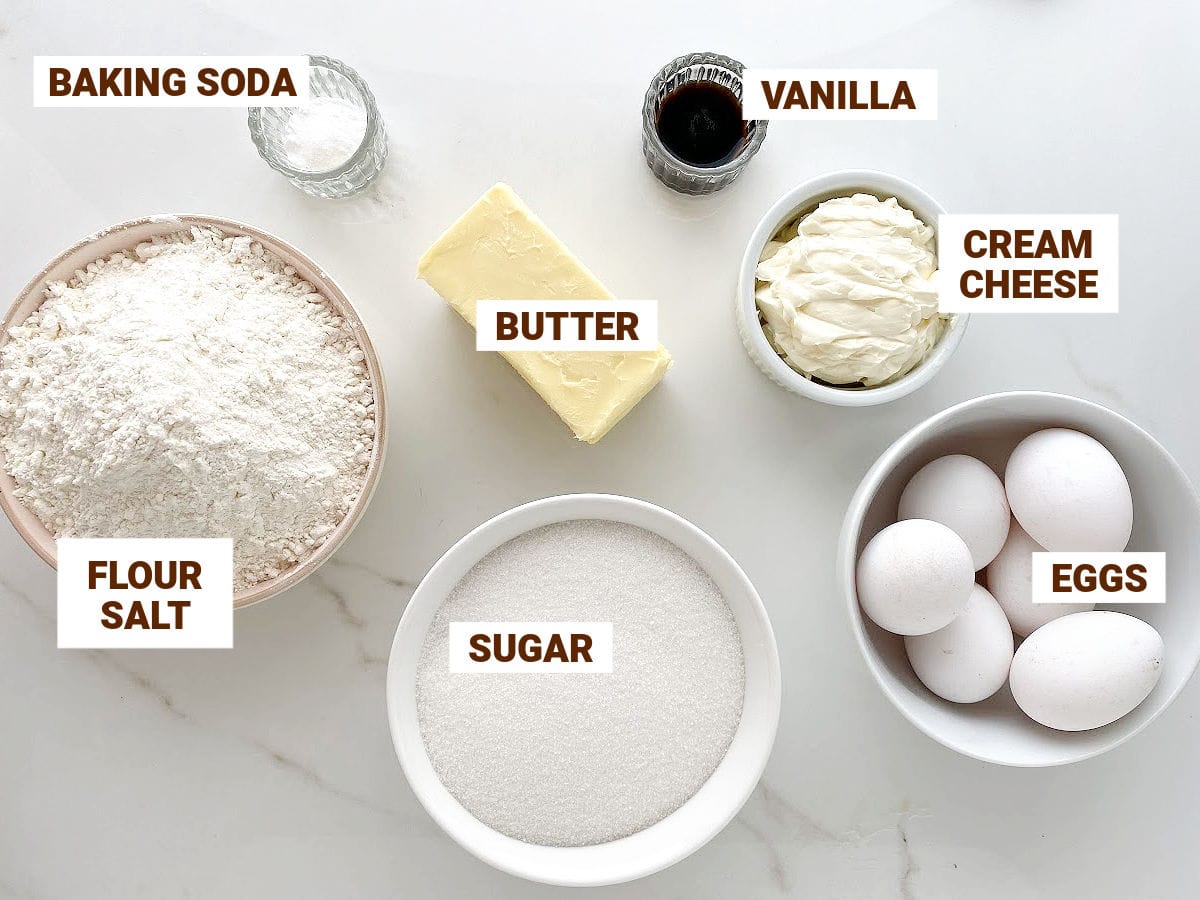
Preparing the bundt pan
If you love making bundt cakes, you probably know the pain of not being able to remove it from the pan in one piece. It has happened to me many times!
There are several ways of dealing with this:
Shortening and flour: use soft shortening to grease the pan, every angle, every nook and cranny until it's completely covered. Using your fingers is messy but effective. You can also use a brush. Sprinkle flour and rotate the pan to cover it completely. You'll have to do it to one side and then the other. Make sure you flour the center tube. Turn the pan upside down over the kitchen sink and smack lightly it against the edge. The excess flour will fall, leaving a thin layer behind. Your pan is ready to be filled.
Cake goop or cake pan-release paste: it's one of my favorites, along with the shortening method above, because it's very effective. Mix equal parts (volume: cups or tablespoons) of shortening, flour and vegetable oil (sunflower or canola) to make a paste. Use it to coat the pan with a brush. Store it in an airtight container (I use a jar) for a month at room temperature or up to 3 months in the refrigerator.
Baking spray: use a spray labeled as having flour or specifically made for baking (as opposed to cooking). It has to have flour; otherwise, the cake will likely stick when removed. At least, that's my experience. I hardly use it anymore.
Recipe: whenever I find a great bundt cake recipe that can be easily removed from an intricate bundt pan, even though I didn’t follow step 1 above, I cling to it like life itself.
Steps to make a cream cheese pound cake
- To cream the ingredients well, use a large bowl and an electric mixer or a stand mixer with the paddle attachment.
- Scraping the sides is important throughout the beating and mixing process to ensure that the ingredients are well integrated.
- Alternating wet ingredients and flour mixture: have ingredients at the temperatures specified in the recipe and add them in parts, starting and ending with dry ingredients (also called flour mixture). This will ensure that they all integrate correctly. If using a stand mixer, use it on low speed when you start incorporating the flour. Beating it too much makes for a tougher cake.
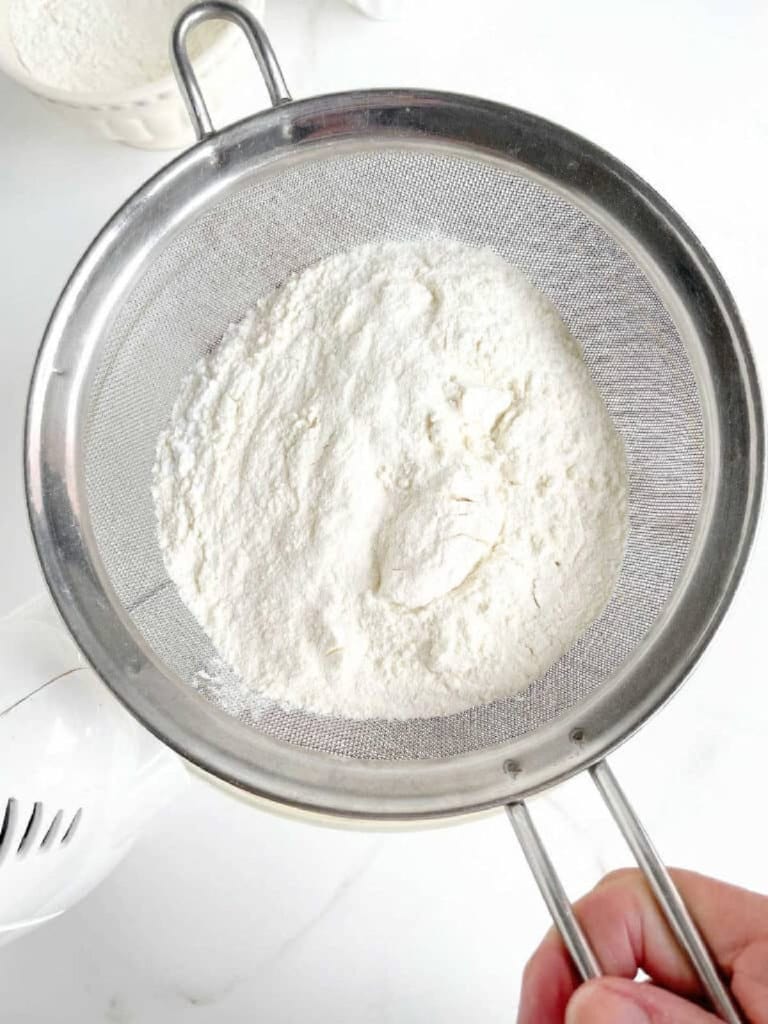
Sifting
It's important to sift the flour mixture to avoid clumps or impurities. And it helps with fluffiness.
You can sift them before or have the ingredients measured and sift them directly over the butter mixture (my choice).
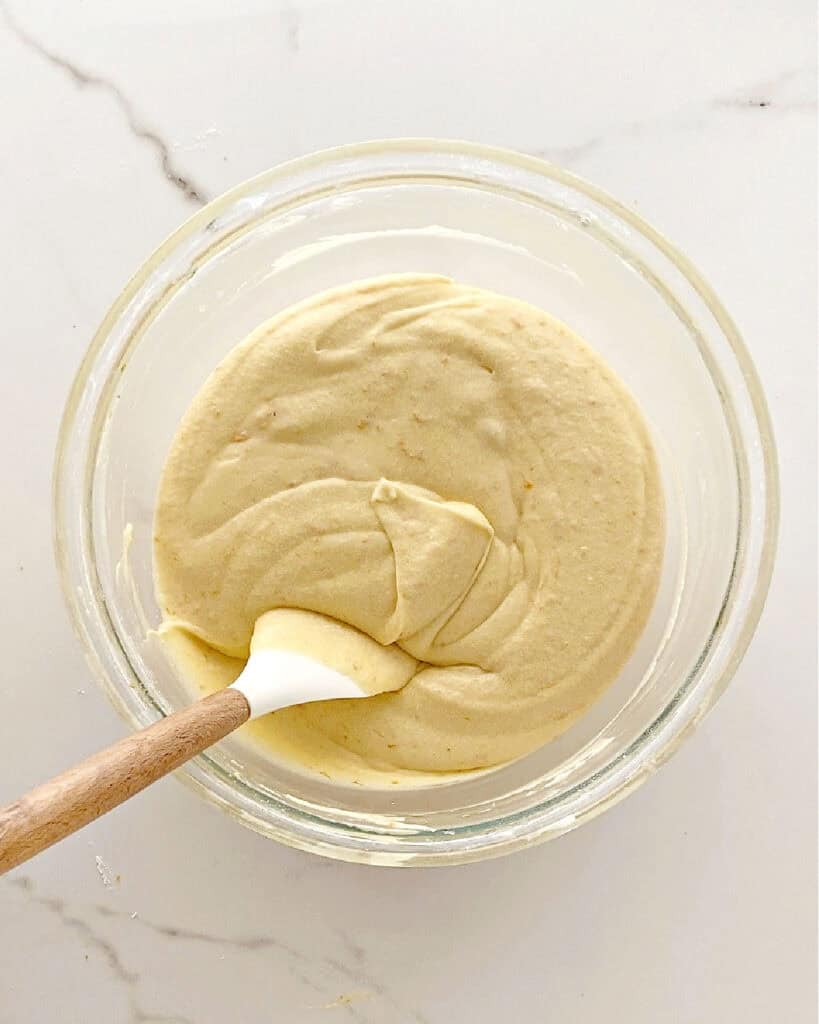
Last mix
I highly recommend mixing the batter with a spatula at the end before pouring it into the prepared cake pan. Scrape the bottom to check for forgotten flour spots; integrate the batter well.
Vintage Kitchen Tip
After incorporating flour in a cake batter, we don't want to develop gluten, as it will toughen the baked cake. So mix *just* until it's all well incorporated but don't overbeat. I like to end mixing with a silicon spatula to ensure the ingredients are fully integrated.
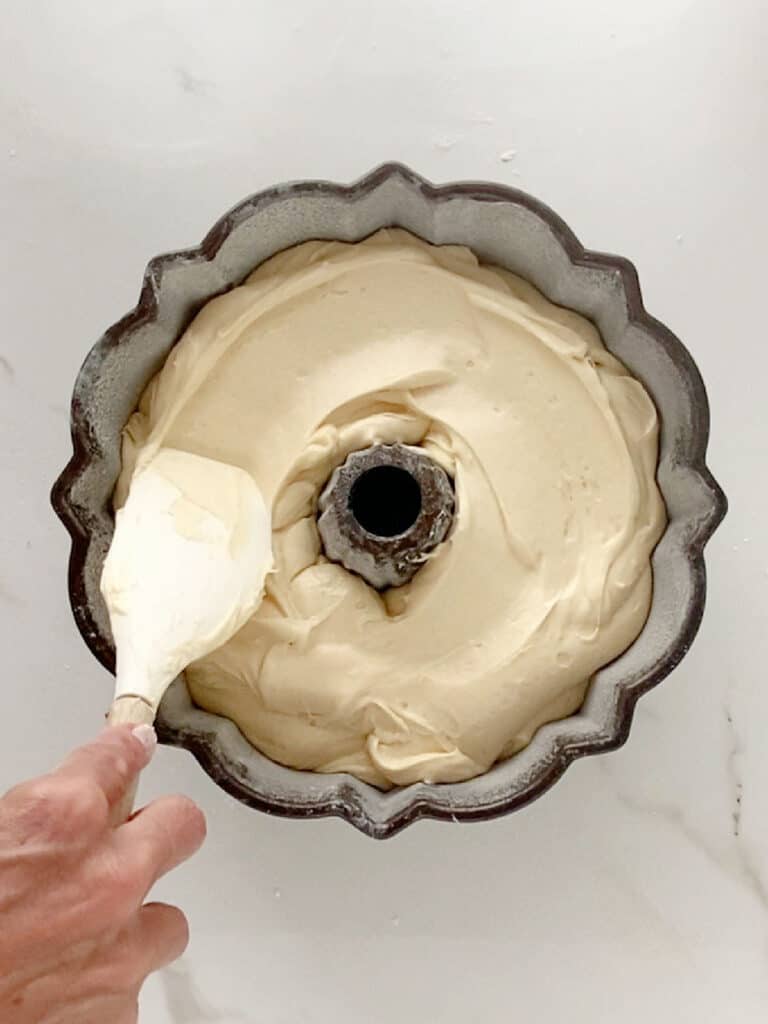
Filling the pan
The bundt cake pan should be filled ⅔ to ¾ of its capacity, no more than that. This way, the batter has space to grow and bake well without overflowing or taking too long.
Smooth the top with a spatula so it bakes more evenly.
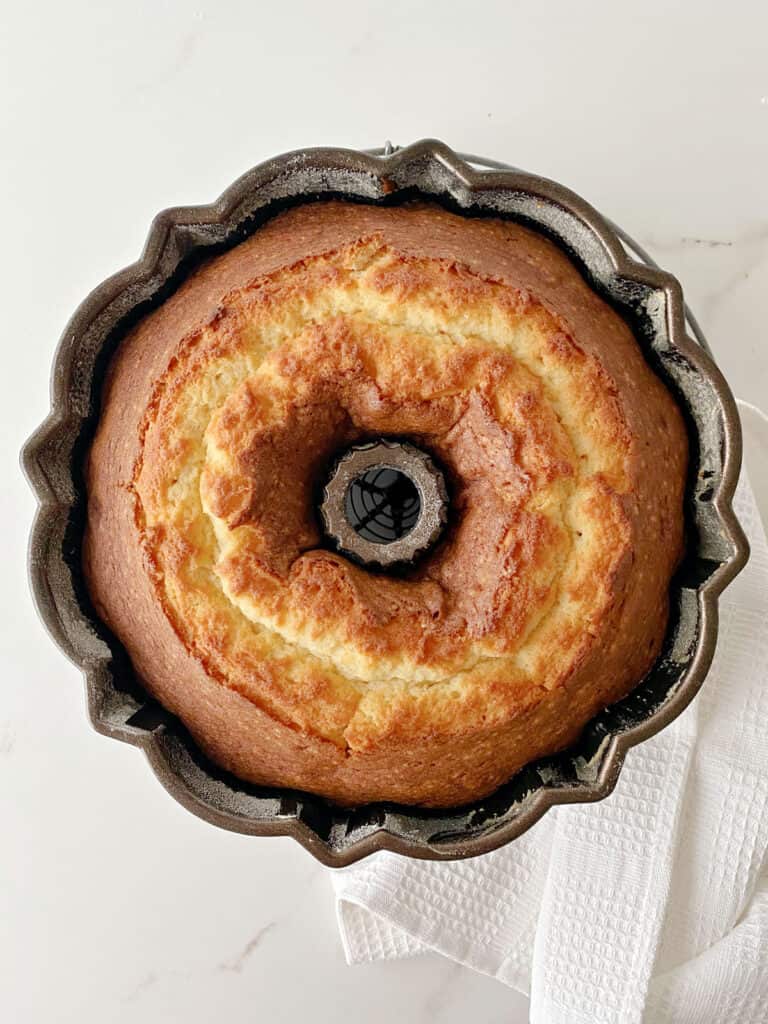
Baking
How long should you bake it? The baking time is in the recipe card, of course. But always remember that ovens and pans vary. Start checking when you're about ¾ of the time specified. The top will usually crack, and that's fine. When a cake tester or toothpick inserted in the center comes out clean, take it out and place it on a wire rack.
Plain or glazed
A simple dusting of powdered sugar is enough if you'll be snacking on this cake or having an afternoon slice with a cup of coffee. Or serving it with whipped cream and fresh berries.
For a more dressed-up cake, a quick powdered sugar glaze is the easiest way to finish this cake.
What liquid can you use? That depends on the flavor you want to add to the cake. Juices: Any citrus works (lemon, orange, lime, etc.), apple or cranberry juice, milk or cream with vanilla extract for a more neutral icing. Maple syrup or liqueur can also be used for a more sophisticated flavor.
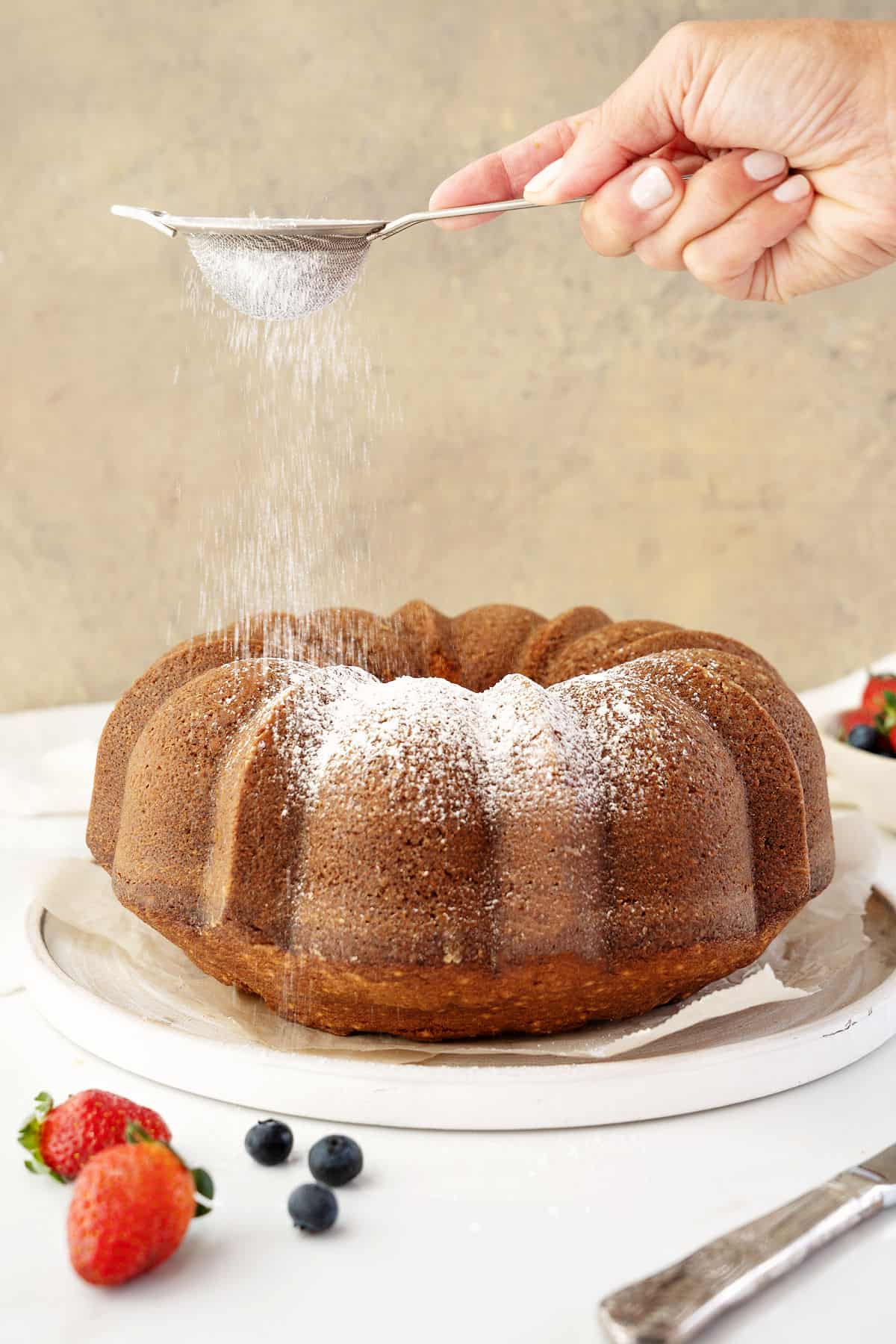
Kitchen Notes
- Organization: read the recipe first and ensure you have ingredients at the correct temperature, utensils and equipment needed, and enough workspace. This will make the process so much easier.
- Baking time: consider that all ovens and pans are different, even if they look similar. The baking time in my recipes is as accurate as possible, but it might take you more or less time. You can use a thermometer (like the OXO oven thermometer) to check that your oven is at the right temperature. I recommend tracking how your oven works and what tiny details you might need to adjust.
- Removing it from the pan: this is a tricky answer as all pans are different. I leave it to cool down on a cooling rack for about 20 minutes and then shake the pan lightly to see if the cake loosens up on its own. If it doesn't, I carefully insert a smooth-bladed knife down the sides to see if there's something stuck there. Then, I shake it gently again. I then let it cool some more, maybe 15 minutes, and remove it carefully, putting the wire rack over the pan and inverting it.
- Storage: it stores well at room temperature for 2 or 3 days, covered in plastic wrap, in an airtight container or under a cake dome. And it freezes well for a month.
- Serving it: I think it's best eaten at room temperature. You can omit the glaze and sprinkle powdered sugar on top, or leave it plain cake and snack on it. If you want to dress it up, create a quick dessert by serving a slice with a dollop of whipped cream and strawberries or blackberries.
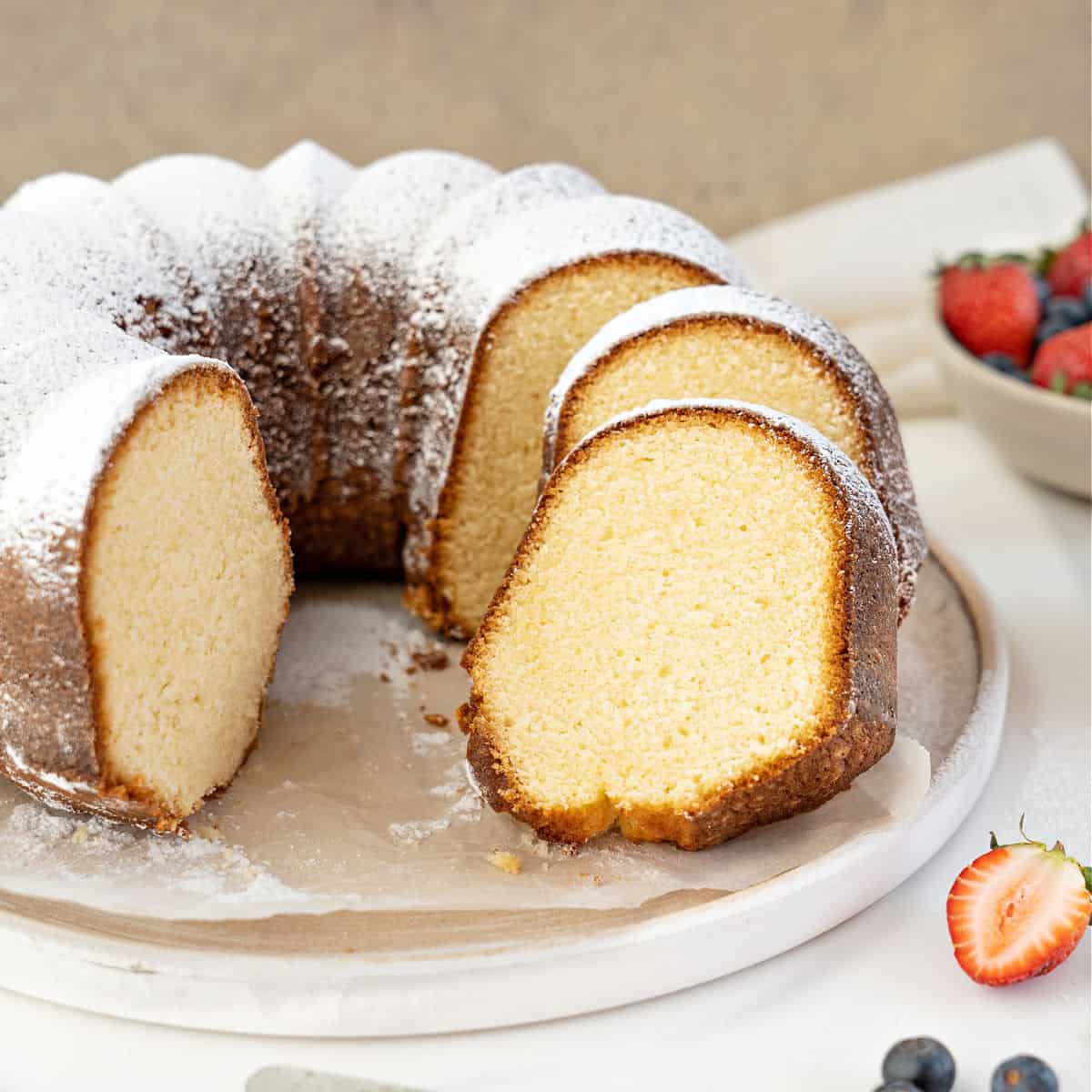
Related recipes you might like:
Let me know in the comments below if you made this recipe and loved it and if you had issues so we can troubleshoot together. I love to hear what you think, always. Thanks for being here. It's much appreciated.
You might also consider subscribing to our FREE email series 'Baking the Best' and our regular newsletter. Or connect via Facebook, Instagram, and Pinterest.
As an Amazon Associate, I earn from qualifying purchases. Read my disclosure policy.
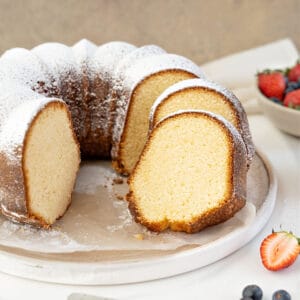
Cream Cheese Pound Cake (old-fashioned recipe)
Click the stars to Rate this Recipe!
Ingredients
- soft shortening, to grease the pan
- flour, to dust the pan
- 1 ½ cups unsalted butter, at room temperature
- 8 ounces regular cream cheese, at room temperature
- 3 cups sugar
- 6 eggs, at room temperature
- 1 ½ teaspoons vanilla extract
- 3 cups all-purpose flour
- 1 teaspoon baking powder
- ½ teaspoon salt
- powdered sugar, to sprinkle
Instructions
- Preheat oven to 350ºF (180°C).
- Grease a 12-cup bundt cake pan (26cm) with soft shortening, covering every angle, nook and cranny. Dust with flour, shaking off excess. Reserve.
- Sift 3 cups all-purpose flour, 1 teaspoon baking powder and ½ teaspoon salt in a medium bowl. Set aside.
- In a large bowl, beat 1 ½ cups unsalted butter with 8 ounces regular cream cheese until creamy and lump-free. Slowly add 3 cups sugar and beat for 3 minutes.
- Add 6 eggs, one at a time, beating well after each addition, and then beat for 1 more minute.
- Add 1 ½ teaspoons vanilla extract and mix to integrate.
- Beginning and ending with dry ingredients, add them in 3 parts, alternating with cream cheese in 2 parts. Pour batter into the prepared pan, smoothing it out with a spatula.
- Bake for about 1 hour or until a cake tester or toothpick comes out clean. Depending on the type of pan and oven you use, it might take more. So always check and take baking times given in a recipe as a reference.
- Let cool 5-10 minutes and carefully invert onto a wire rack. Cool completely. At this point, you can wrap it in plastic for a day at room temperature, 3 days in the fridge or frozen for a month.
- Dust with powdered sugar before serving.

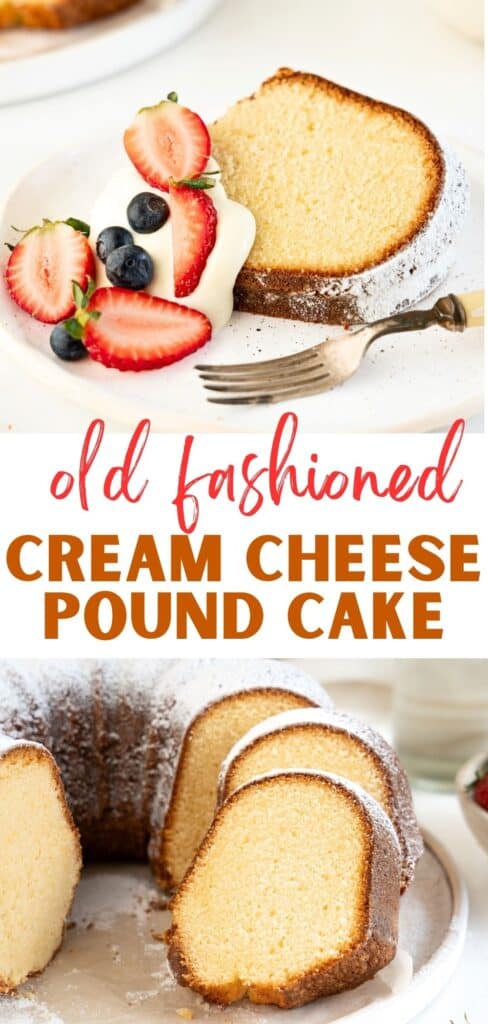
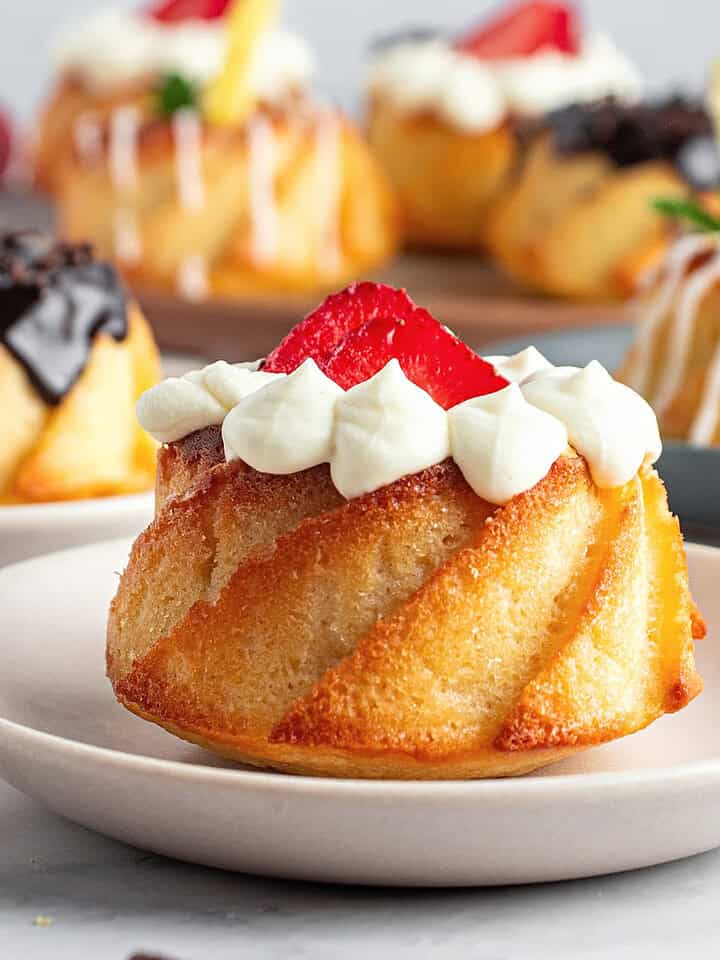
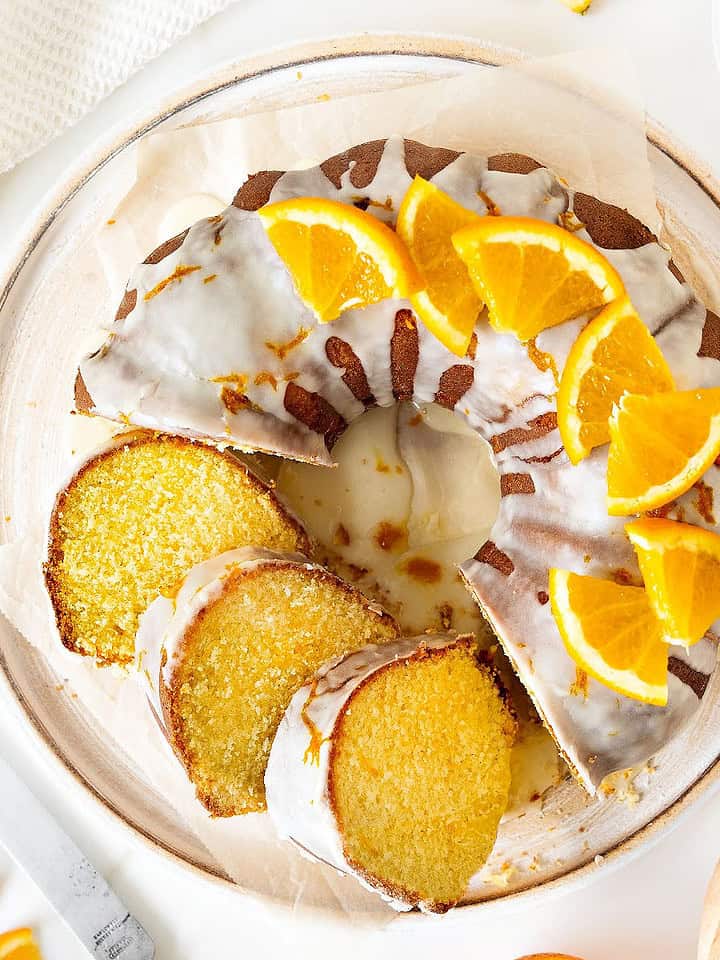
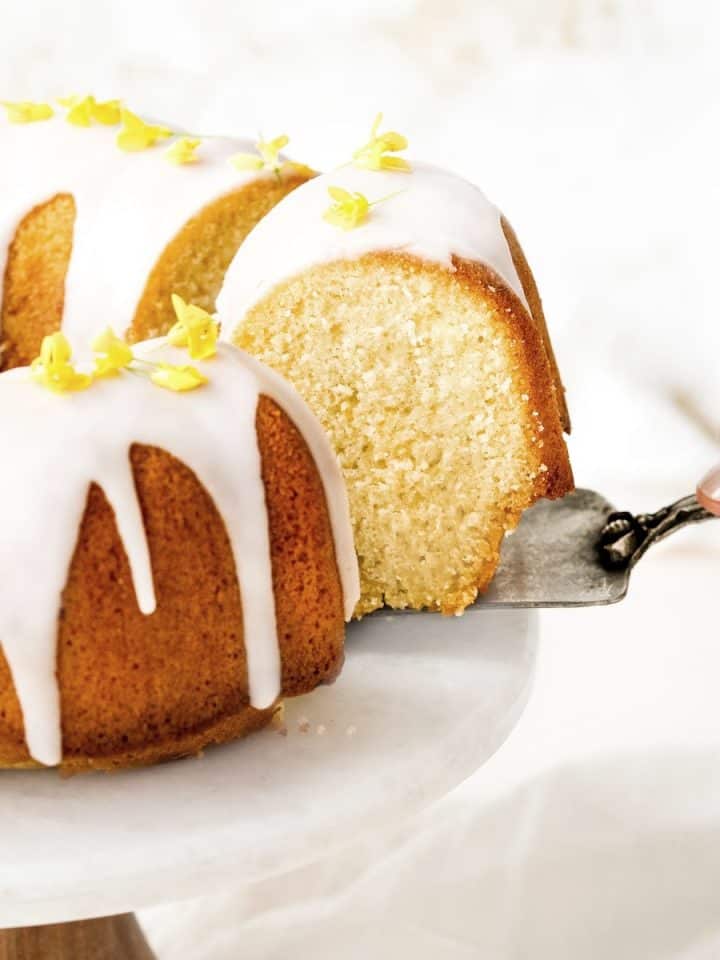
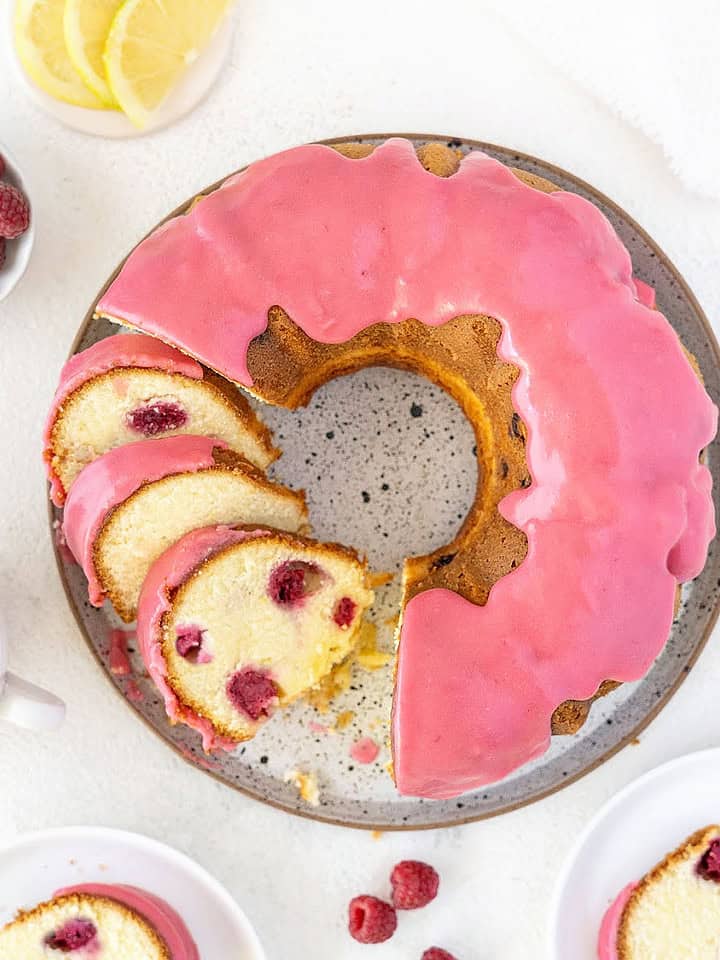
Rate and review this recipe